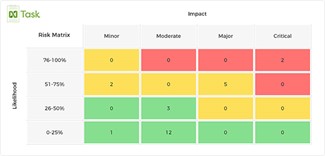How to use the risk assessment matrix to organize your project better
Rarely projects get launched without running into some kind of problem. Living in a world where this does not happen would be like a dream. However, in today’s world market, trends change rapidly, so the risk cannot be avoided.
If you are launching your business, you should consider doing a risk assessment matrix. Even when you are doing a new task, one of the questions that you should ask is, “What could go wrong?”. In the modern digital world, a lot of online tools exist that help and automate building the forecasts and planning your new business – such as IdeaBuddy, for example – but in many cases, it’s still good to do this manually.
A risk assessment matrix is a tool that was developed to analyze risk. Yes, we can use data to analyze risks. By doing so, any organization can detect and prioritize different risks. They do this by estimating the probability of occurrence.
Learn below more about this topic in this article created by our team at TMS.
What is a risk assessment matrix?

Image source: Fred Wilson
A risk matrix is sometimes also called the Probability Matrix, or Impact Matrix. This is an effective tool that can help in risk evaluation by focusing on the probability of potential risks.
A risk assessment matrix can help you calculate project risk quickly. It does this by identifying the things that could go wrong and weighting the potential damage. This makes it easy to prioritize problems. Action will be needed in order to keep a project on course, and safe as well.
Project managers should think about potential risks in order to avoid risk events from happening. While managing uncertainty sounds challenging, there are more and more calculating risk tools available today that can help and require little effort on your part. Simply create your own risk assessment matrix and use it as many times as you need.
Here are some benefits that you can take advantage of when making your risk matrix:
- You will be able to prioritize the risks with the level of severity.
- You get a simple process for the management of risk.
- It helps you in finding the potential risk with minimal effort.
- Information is recorded and audited.
- It demonstrates the organization’s ability to managing risk.
- It helps in neutralizing any possible consequences.
https://tms-outsource.com/blog/posts/risk-assessment-matrix/

